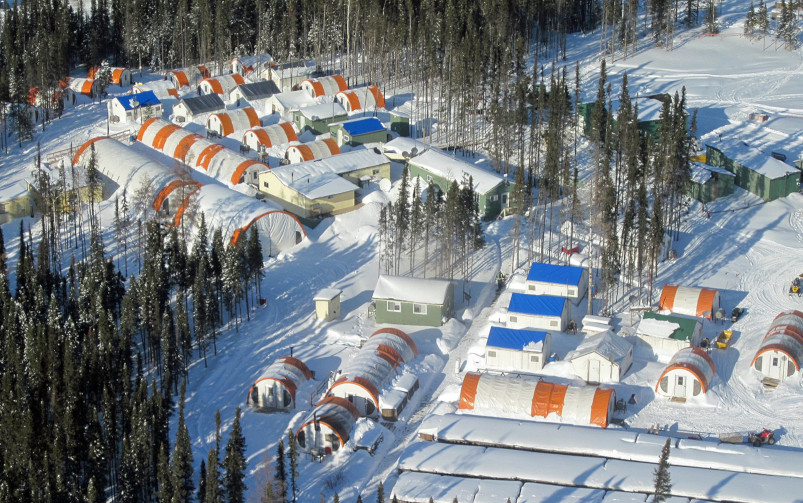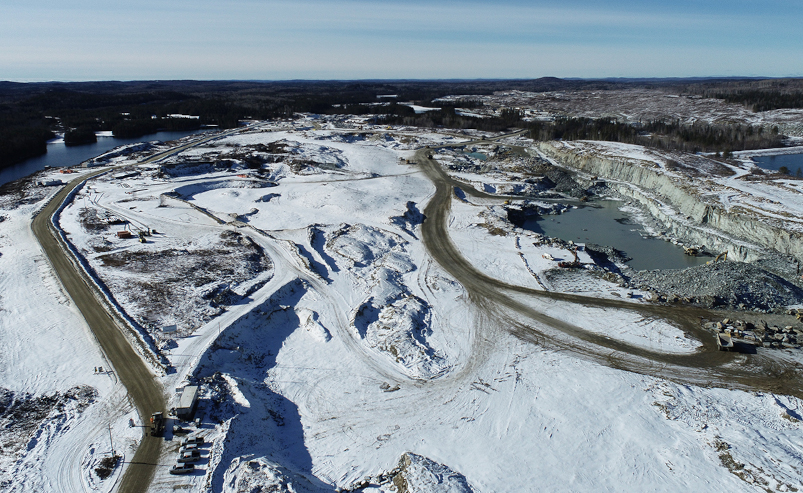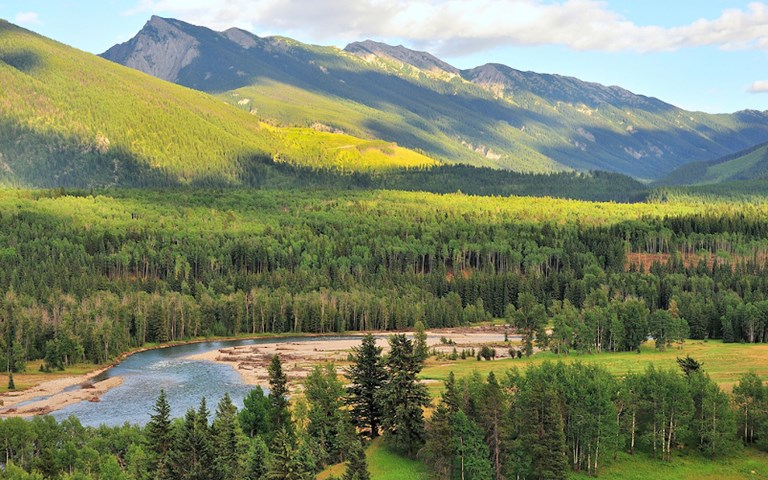Teck Resources will partner with the Ktunaxa Nation to conserve wildlife habitat in the Elk River Valley and Flathead River Valley in southeastern British Columbia. Courtesy of Teck Resources.
(Like what you’re reading? Get our weekly recap delivered straight to your inbox each Friday.)
Happy new year, folks! Welcome to our first weekly mining news recap of 2021, where we catch you up on some of the news you may have missed since the holidays. This week’s headlines include a new mining energy benchmarking platform, Quebec miners being exempt from the province’s new COVID lockdown measure and a recap of key legislative changes that took place in different mining jurisdictions around the world in 2020.
Agnico Eagle Mines has agreed to buy TMAC Resources in a deal for $286.6 million. The company will pay $2.20 per share, a 26 per cent premium from the $1.75 per share China’s Shandong Gold Mining Co. had offered last May. The Canadian government blocked that deal after completing a national security review last month. Agnico's plans for the future of the Hope Bay mine and surrounding property in Nunavut include exploration and expansion projects.
A joint management agreement has been signed between the Ktunaxa Nation and Teck Resources regarding over 7,000 hectares of land in the Elk Valley and Flathead River Valley. Under the agreement, the Ktunaxa Nation and Teck will share management duties in conserving the land’s significant fish and wildlife habitat. The agreement also supports the Ktunaxa Nation Stewardship Principles and Teck’s aims to achieve a net positive impact on biodiversity within the areas it operates in.
MiTRAQ and the Department of Natural Resources Canada have developed the Mining Energy Benchmarking Platform aimed at transitioning Canada’s mining industry to a low carbon future, as reported by Mining.com. The platform allows analysis of power generation and consumption at mine sites and offers data-driven insight into the productivity of energy use. Miners will also be able to compare the energy efficiency of their sites anonymously with the aggregated data generated by peers.
Miners in Quebec are relieved after being exempt from the new COVID lockdown measures soon-to-be in place across the province, as reported by Mining Journal. Quebec’s premier, François Legault, has announced new overnight curfew restrictions for residents and extended closures for non-essential businesses until February. According to the Quebec Mining Association, the provincial government has recognized the industry’s early robust safety steps – adopting site entry controls and other risk reduction measures – and partly credits it as the reason why they can continue their mining and exploration operations.
Suncor Energy Inc. has resumed operations at its Fort Hills oil sand mine in Alberta since the deaths of two employees in a vehicle accident had suspended operations, as reported by The Globe and Mail. The accident occurred on Dec. 28 after a bulldozer collided with a light vehicle truck, which caused the deaths of the workers employed by ClearStream Energy Services Inc., a company that provides mining services at Fort Hills. According to Suncor, the Fort Hill operations are slowly restarting, with the safety and wellbeing of employees as the priority.
PureGold Mining has announced that it has poured its first gold bar at its Red Lake, Ontario mine. The company expects to achieve commercial production at the mine by the end of the first quarter of 2021. PureGold plans on continuing surface and underground exploration drillings, upgrading its mineral resource to include two-years of completed drillings and improving its mine design and plan.
The federal government has established a Minister’s Advisory Council on Impact Assessment (MINAC) to review the effectiveness of the Impact Assessment Act (IAA). The act was adopted over a year ago and implemented an Impact Assessment Agency to supervise all impact assessments for major resource and transport projects, including mining and oil sands projects. MINAC will advise Jonathan Wilkinson, Minister of the Environment and Climate Change, on whether the Act has achieved its objective of assessing the efficacy, accountability and predictability of decision-making under the act and how early potentially problematic issues can be identified under the assessment process. The first report is expected to be submitted by June 2021.
Many Albertan ranchers and First Nations are taking legal action to reverse the province’s decision to allow more open-pit coal mining on the eastern slopes of the Rockies, as reported by The Western Producer. Ranchers are concerned that the coal mines will harm their cattle operations and risk polluting water used by farmers and community members. A judicial review of the province’s decision will be heard by the Alberta Court of Queen’s Bench in two weeks.
Canada’s first-ever rare earth processing facility is being built, with the Saskatchewan government committing $31 million in funding as part of its 2030 Growth Plan. The facility will be owned and operated by the Saskatchewan Research Council (SRC) and will give mining companies the option to sell their feedstock to a North American facility instead of China, which provides over 70 per cent of the world’s rare earth elements. The new facility is forecast to employ 24 full-time personnel and is expected to be fully operational by 2022.
While the world was reeling from the COVID-19 pandemic in 2020, some key legislative changes occurred in various mining jurisdictions around the world to bolster their domestic economy. In countries such as the United States, Indonesia, Papua New Guinea and at home in Canada, governments have lifted bans on exploration, created funds and opportunities for critical minerals, moved towards resource nationalization and more.
With mine tailings under a microscope from inside and outside the industry, it’s more important than ever that miners have a clear picture of the state of their tailings storage facilities. Geotechnical engineers are using modern tools – such as 3D modelling, IoT solutions and slope analysis programs – to get a better understanding of their tailings facilities and how to avoid risks.
If you’ve got feedback, you can always reach us at editor@cim.org. If you’ve got something to add, why not join the conversation at our Facebook, Twitter or LinkedIn pages? Like your recap with a few more gifs? Check out our mining news recap stories on our Instagram.
Remember to stay safe, keep your distance and wear your masks!




